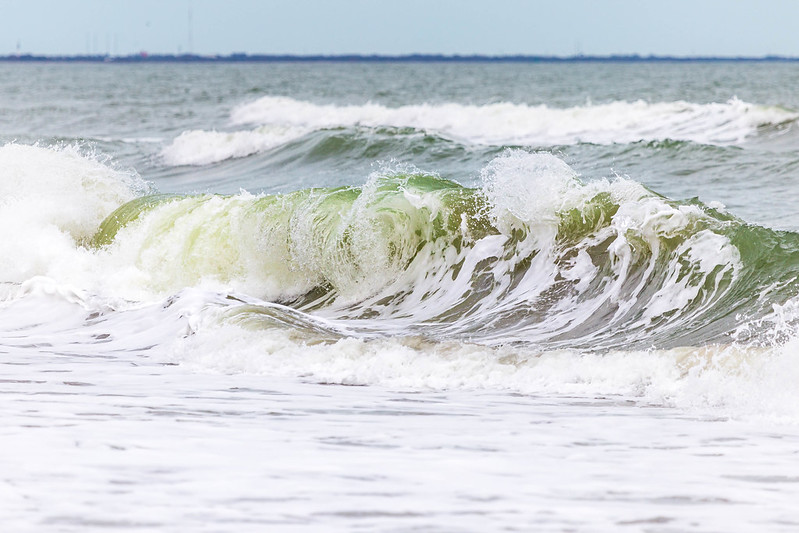The Atlantic Ocean is one of the world’s most explored seas on the surface, yet its depths remain among the planet’s most mysterious and least understood environments. Beneath the waves, hidden miles below, lies the Atlantic abyss, a world that defies human imagination and reshapes our understanding of marine life. This deep-sea realm, stretching from the continental shelves down to the ocean floor and encompassing extreme environments such as hydrothermal vents and deep-sea canyons, is home to a wealth of unique ecosystems. These ecosystems reveal new insights into the adaptability of life, the complexity of biological interactions, and the intricate processes that contribute to our planet’s climate and ecology.
In this article, we journey into the depths of the Atlantic to uncover the secrets of its deep-sea ecosystems, exploring how they function, the extraordinary creatures that inhabit them, and their significance to both science and global environmental health.
What Lies Beneath: Layers of the Atlantic Ocean
The deep sea is characterized by its vertical layers, each with distinct environmental conditions and life forms. As we descend, these layers introduce increasingly harsh conditions, including near-total darkness, intense water pressure, and temperatures close to freezing.
- Mesopelagic Zone (200–1,000 meters): Also known as the “twilight zone,” this area receives minimal light, making photosynthesis impossible. It is home to organisms adapted to low-light environments, such as bioluminescent fish, which use light to attract prey or communicate.
- Bathypelagic Zone (1,000–4,000 meters): Known as the “midnight zone,” this layer is in complete darkness. Here, organisms must adapt to extreme pressure and find alternative energy sources, such as detritus falling from upper layers.
- Abyssopelagic Zone (4,000–6,000 meters): Also called the “abyss,” this region represents the ocean floor. Few organisms can survive at such depths, but the ones that do exhibit remarkable adaptations.
- Hadal Zone (6,000 meters and below): Found in deep-sea trenches and canyons, this zone experiences pressures over 1,000 times that of the surface. Despite these extreme conditions, microbial life and unique invertebrates thrive here.
Each of these zones supports life that has evolved specific adaptations to survive under challenging conditions, from bioluminescence and slow metabolisms to unique reproductive strategies.
The Ecosystem Giants: Hydrothermal Vents and Cold Seeps
Two of the most extraordinary habitats in the Atlantic deep sea are hydrothermal vents and cold seeps, unique ecosystems that rely on chemical processes rather than sunlight as an energy source.
Hydrothermal Vents: Hotbeds of Biodiversity
Discovered in the late 1970s, hydrothermal vents are cracks in the ocean floor where superheated water, rich in minerals like sulfur and methane, escapes from the Earth’s crust. These vents can reach temperatures of up to 400°C (750°F) and create mineral-rich environments that support a unique form of life called chemosynthetic organisms. Unlike photosynthetic organisms that rely on sunlight, chemosynthetic organisms derive energy by oxidizing chemicals found in the vent fluids.
Some of the incredible creatures found around hydrothermal vents include:
- Giant Tube Worms (Riftia pachyptila): These iconic deep-sea organisms can grow over six feet long and lack a digestive system, instead relying on symbiotic bacteria in their tissues to produce energy from sulfur.
- Vent Crabs and Shrimp: Many species of crabs and shrimp cluster near vents, feeding on microbial mats or smaller organisms. Some shrimp species, like the eyeless vent shrimp, have evolved heat-detecting organs to locate vent habitats.
- Vent Octopuses: Recently discovered species of octopus, like the “Dumbo octopus” with its ear-like fins, are among the deepest-living octopus species, found near hydrothermal vents at depths of around 2,500 meters.
Hydrothermal vent ecosystems are among the most productive and diverse in the deep sea. Their discovery revolutionized biological sciences by showing that life could exist independently of sunlight, reshaping our understanding of what constitutes a viable environment for life.
Cold Seeps: Oases of Life on the Ocean Floor
Cold seeps are areas where methane, hydrogen sulfide, and other hydrocarbons seep from the seabed at much lower temperatures than hydrothermal vents. Like vent ecosystems, cold seeps support chemosynthetic communities. Cold seep habitats are found along the continental margins of the Atlantic, where tectonic activity and sediment composition create conditions for gas and fluid escape.
Organisms found in cold seeps often mirror those of hydrothermal vent communities, with adaptations that allow them to metabolize methane and sulfur compounds. Some of the unique inhabitants of cold seeps include:
- Mussels and Clams: Cold seep mussels and clams harbor symbiotic bacteria in their gills that enable them to process methane and hydrogen sulfide for energy.
- Methane Ice Worms (Hesiocaeca methanicola): These unusual worms live on methane hydrate deposits, where they feed on bacteria and are uniquely adapted to survive in the cold, methane-rich waters of the deep sea.
- Solemyid Clams: These clams have chemosynthetic bacteria in their gills that help convert methane into energy, allowing them to thrive in nutrient-poor environments.
Cold seeps, like hydrothermal vents, play an essential role in deep-sea nutrient cycles. They act as biodiversity hotspots, attracting a wide range of species and providing vital ecological functions, including nutrient recycling and carbon sequestration.
Adaptations for Survival: How Deep-Sea Creatures Thrive
The harsh conditions of the deep Atlantic require extreme adaptations for survival. These adaptations are fascinating examples of life’s resilience and ability to thrive under challenging circumstances. Here are some key adaptations that enable deep-sea species to survive in the Atlantic abyss:
1. Bioluminescence
One of the most remarkable adaptations in the deep sea is bioluminescence, the ability to produce light through biochemical reactions. In the absence of sunlight, bioluminescence serves several purposes, including communication, camouflage, attracting mates, and luring prey. Many deep-sea organisms, such as anglerfish, jellyfish, and certain types of squid, are bioluminescent.
For example, anglerfish have a bioluminescent lure on their heads to attract prey in the darkness. Similarly, bioluminescent jellyfish use light displays as a defense mechanism, creating bursts of light to startle potential predators.
2. Low Metabolic Rates
Due to the scarcity of food and cold temperatures, deep-sea creatures often have low metabolic rates. This adaptation allows them to conserve energy and survive on minimal resources. Many deep-sea fish, such as the deep-sea grenadier, have developed slow metabolisms, which enable them to survive in environments where food is scarce and must be used efficiently.
3. Gigantism and Dwarfism
The phenomenon of deep-sea gigantism is common in certain groups of animals, such as crustaceans, sea spiders, and jellyfish. Giant species like the giant squid and Japanese spider crab have evolved to maximize survival in nutrient-poor environments. In contrast, other species display deep-sea dwarfism, which allows them to require fewer resources.
These size adaptations may also be related to the extreme pressure of the deep sea, with larger sizes allowing some animals to withstand high pressure, while smaller sizes may enable other species to move and hunt efficiently in confined spaces.
The Role of Deep-Sea Ecosystems in Climate Regulation
Deep-sea ecosystems in the Atlantic, particularly deep-sea corals and cold seeps, play a vital role in global climate regulation. These ecosystems contribute to carbon sequestration by capturing and storing carbon from the water column, effectively removing it from the atmospheric carbon cycle. Deep-sea corals and sponges, for instance, can form large reefs that trap and store organic carbon over centuries.
Cold seeps also contribute to carbon storage by supporting communities of organisms that consume methane, a potent greenhouse gas. By oxidizing methane, these organisms reduce the amount of methane that would otherwise escape into the atmosphere, helping mitigate climate change.
Additionally, the sediment in deep-sea environments acts as a carbon sink. Organic matter sinking from the ocean’s surface is buried in deep-sea sediments, where it decomposes and eventually locks away carbon. These processes highlight the importance of deep-sea ecosystems in balancing global carbon levels and regulating climate.
The Importance of Protecting the Atlantic’s Deep-Sea Ecosystems
Despite their remoteness, deep-sea ecosystems in the Atlantic are increasingly at risk from human activities such as deep-sea mining, oil and gas exploration, and climate change. The fragile habitats of hydrothermal vents, cold seeps, and deep-sea corals can take centuries or even millennia to develop, making them particularly vulnerable to disturbances.
Deep-sea mining for minerals like cobalt, nickel, and rare earth elements has raised concerns about its potential impacts on these ecosystems. Mining operations disturb the ocean floor, releasing sediment plumes and toxins that can suffocate or poison marine life. Similarly, oil and gas exploration can disrupt sensitive habitats, and spills can have devastating effects on deep-sea ecosystems.
Climate change is also impacting the deep sea, as warming waters and acidification affect species’ survival. Cold-water coral reefs, which provide critical habitats for numerous marine species, are particularly susceptible to acidification, which weakens their calcium carbonate skeletons.
Conservation efforts are essential to protect the Atlantic’s deep-sea ecosystems. Establishing Marine Protected Areas (MPAs) and implementing stringent regulations on deep-sea mining and oil exploration are necessary steps to safeguard these habitats. International cooperation is also vital, as deep-sea ecosystems span multiple national jurisdictions and require collaborative efforts to manage effectively.
Conclusion: A World Worth Protecting
The Atlantic’s deep-sea ecosystems are not only a source of scientific wonder but also an essential part of Earth’s ecological balance. From hydrothermal vents teeming with life to methane-munching organisms at cold seeps, the deep sea reveals the adaptability of life and the complexity of marine ecosystems. These ecosystems contribute to nutrient cycles, climate regulation, and biodiversity, underscoring their significance to the health of our planet.
By exploring and understanding these hidden worlds, we gain insights into the resilience of life and the importance of conservation in preserving these fragile ecosystems. The deep sea is indeed one of the last frontiers on Earth, and as we uncover its secrets, we bear the responsibility to protect it for generations to come.



